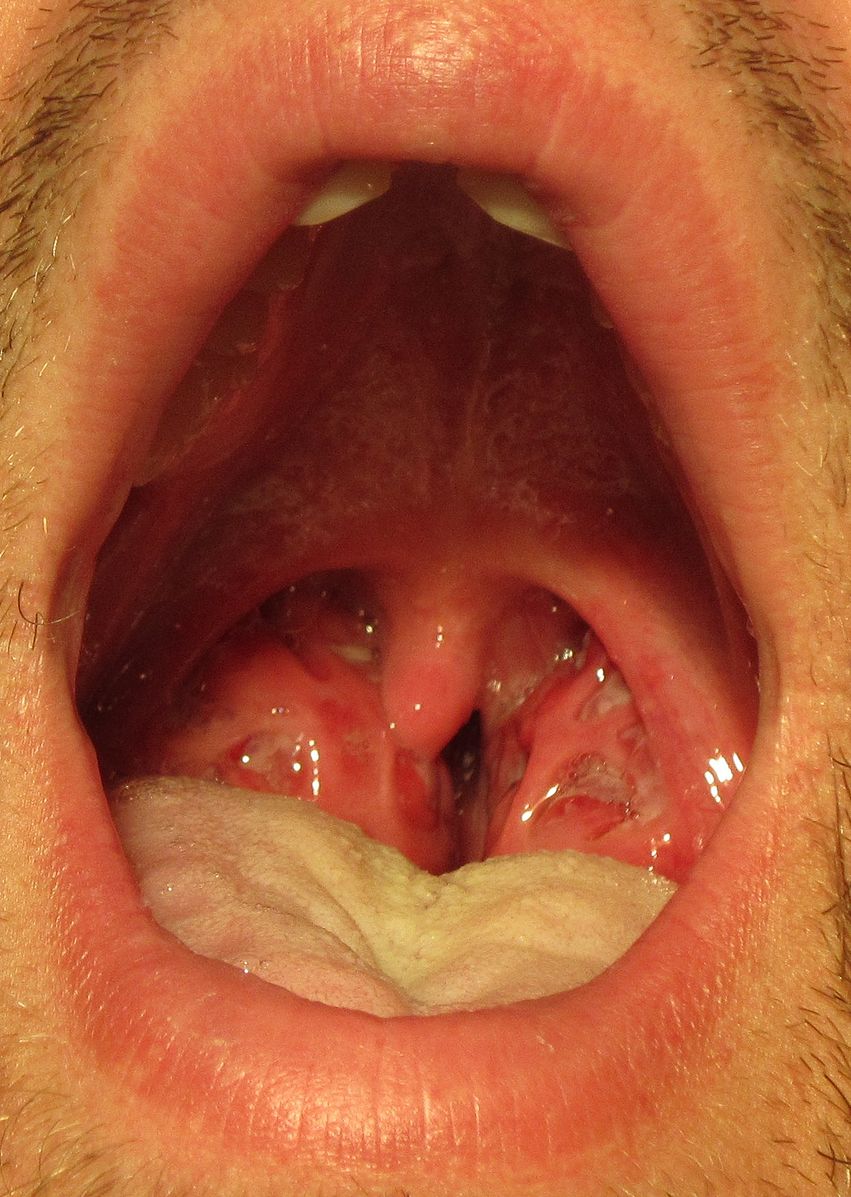Difference Between Chlamydia and Strep Throat
Chlamydia are bacteria, two species of which can cause illness in people in the form of either an upper respiratory infection or an STD. Strep throat is an infection that is caused by Streptococcus pyogenes bacteria.
What is Chlamydia?
Definition:
Chlamydia infections are either respiratory (caused by C. pneumoniae), or genital (caused by C. trachomatis). In either type of infection, pain and inflammation result in the area of infection, and both infections can be spread to other people.
Symptoms and complications:
C. trachomatis causes symptoms such as pain and discharge and itching in the genital area. C. pneumonia causes a runny nose, cough, and fever. Complications that can result from C. trachomatis include pelvic inflammatory disease in women and inflammation of the testes in men. C. pneumoniae can in rare cases, lead to a worsening of asthma symptoms, infection of the heart muscle and the brain. It can lead to death in a few rare cases.
Diagnosis:
A molecular test looking for the DNA of the Chlamydia can provide a positive diagnosis of the presence of the species. Physical symptoms may be suggestive of a particular infection, but the molecular test can give certainty as to the identity of the causative organism.
Risk factors and treatment:
The C. pneumoniae is caught by being around people who are sick with the disease, so if you are in a crowded area where there are sick individuals. The old and very young are at increased risk of this infection. The C. trachomatis is spread through sex, so the more partners a person has the greater the risk of contracting this STD. The antibiotic doxycycline is often used to treat chlamydial infections.

What is Strep Throat?
Definition:
Strep throat is an infection of the throat and mouth that is caused by bacteria Streptococcus pyogenes. This infection is also often called streptococcus pharyngitis.
Symptoms and complications:
The symptoms of strep throat include having a painful throat and finding swallowing to be painful. The tonsils are often red and swollen and covered in white areas of pus. There may be red spots present at the back of the mouth as well. The lymph nodes in the neck and jaw also often enlarge when a person has strep pharyngitis. Strep can lead to complications such as kidney disease and rheumatic fever.
Diagnosis:
A physical exam and a test for antigens can diagnose strep throat. The antigen test is done after taking a swab from the person’s throat. The swab can also be cultured and grown for further confirmation of the presence of the S. pyogenes bacterium. In the past, doctors used a series of criteria and symptoms to determine the likelihood that a person had strep throat. This included seeing if the rash was present at the back of the mouth and if the tonsils were affected.
Risk factors and treatment:
Children are at greater risk than adults for getting strep throat, and it is more prevalent in the winter months. Treatment consists of using antibiotics, most often amoxicillin or penicillin. However, people with allergies to these can take erythromycin, clindamycin or azithromycin antibiotics instead of the penicillin-group antibiotics.
Difference between Chlamydia vs. Strep Throat?
Definition
Chlamydia is an infection that either causes respiratory problems or affects the genital region depending on the species. Strep throat is a bacterial infection of the mouth and throat region.
Causative agent
Chlamydia is caused by C. pneumoniae or C trachomatis bacterial species. Strep throat is caused by S. pyogenes bacterial species.
Cell wall type
Chlamydia bacterial cells have a gram-negative cell wall. The Streptococcus bacteria have a gram-positive cell wall.
Symptoms
C. trachomatis causes pain and possibly discharge from the genital organs, C. pneumonia causes coughing and other respiratory infection symptoms. Strep throat causes pain in the throat area, red rash at the back of the mouth, pus on the tonsils and swelling. The lymph nodes in jaw and neck may also swell.
Diagnosis
A molecular test showing the presence of the genetic material can be used to diagnose Chlamydia. An antigen test can be used to look for the Streptococcus that causes the strep throat.
Risk factors
Depending on the species, risk factors for chlamydial infections include being promiscuous, and with the pneumonia-form, being very young or very old. Being a child during winter time is a risk factor for strep throat.
Complications
Chlamydia trachomatis infection can cause complications such as testicle inflammation in men and pelvic inflammatory disease in women. The pneumonia form of chlamydial infection can have complications such as infected heart and brain, but this is rare. Strep throat can cause complications such as rheumatic fever and kidney disease.
Treatment
An antibiotic such as doxycycline can be used to treat Chlamydia. The antibiotics penicillin and erythromycin can be used to treat strep throat infections.
Table comparing Chlamydia vs. Strep throat

Summary of Chlamydia vs. Strep Throat
- Chlamydia and strep throat are both caused by bacteria, and thus can both be treated using antibiotics.
- C. trachomatis causes an STD while C. pneumoniae infects the respiratory tract.
- S. pyogenes infects the pharynx, with is the throat region of people.
- C. pneumoniae and S. pyogenes both infect children more often than adults.
- Both infections can be diagnosed using specific molecular tests in which either DNA or antigens of the causative agent are looked for.
- Difference Between Rumination and Regurgitation - June 13, 2024
- Difference Between Pyelectasis and Hydronephrosis - June 4, 2024
- Difference Between Cellulitis and Erysipelas - June 1, 2024
Search DifferenceBetween.net :
Leave a Response
References :
[0]Bush, Larry M, and Maria T. Perez. “Streptococcal infections”. Merckmanuals. Merck & Co., 2018, https://www.msdmanuals.com/professional/infectious-diseases/gram-positive-cocci/streptococcal-infections?query=strep%20throat
[1]Del Mar, Chris B. "A clinical prediction model did well in diagnosing pediatric group A β-hemolytic streptococcal pharyngitis." ACP journal club 136.1 (2002): 37-37.
[2]Hammershlag, Margaret R. “Chlamydia”. Merckmanuals. Merck & Co., 2018, https://www.msdmanuals.com/professional/infectious-diseases/chlamydia-and-mycoplasmas/chlamydia?query=chlamydia
[3]Image credit: https://commons.wikimedia.org/wiki/File:StrepAug2010.JPG
[4]Image credit: https://commons.wikimedia.org/wiki/File:SOA-Chlamydia-trachomatis-female.jpg
